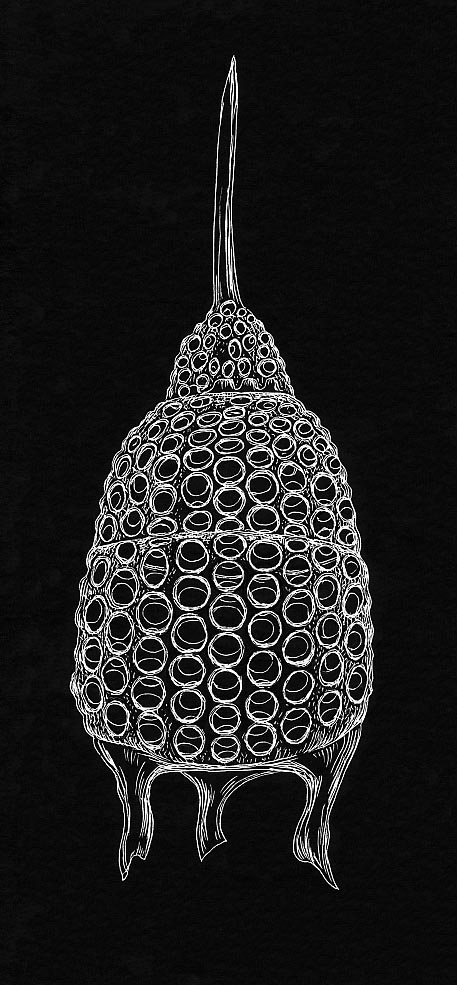Radiolaria date back to the start of the Cambrian period, and have seen very little change over time. They are mainly found in the upper regions of open oceans, where they feed on other planktonic organisms and frequently contain symbiotic algae which provide much of their energy. Like other amoeba, radiolaria use pseudopodia to capture food.
These geometric organisms possess astoundingly intricate skeletons, and much diversity in shape. The glass-like tests are concentric spheres, each perforated and connected by radial bars. It is through the perforations that the radiolaria extend their pseudopodia when feeding.
Radiolaria are fascinating and beautiful creatures; their tests are truly works of art. They are an impeccable example of nature’s elegance, perfection, and order. The delicate shapes often remind me of honeycombs, perhaps formed into the shape of a birdcage, a glistening star, or a creature out of a Dr. Seuss story. Radiolaria have inspired the work of many artists, including those at Nervous System.









